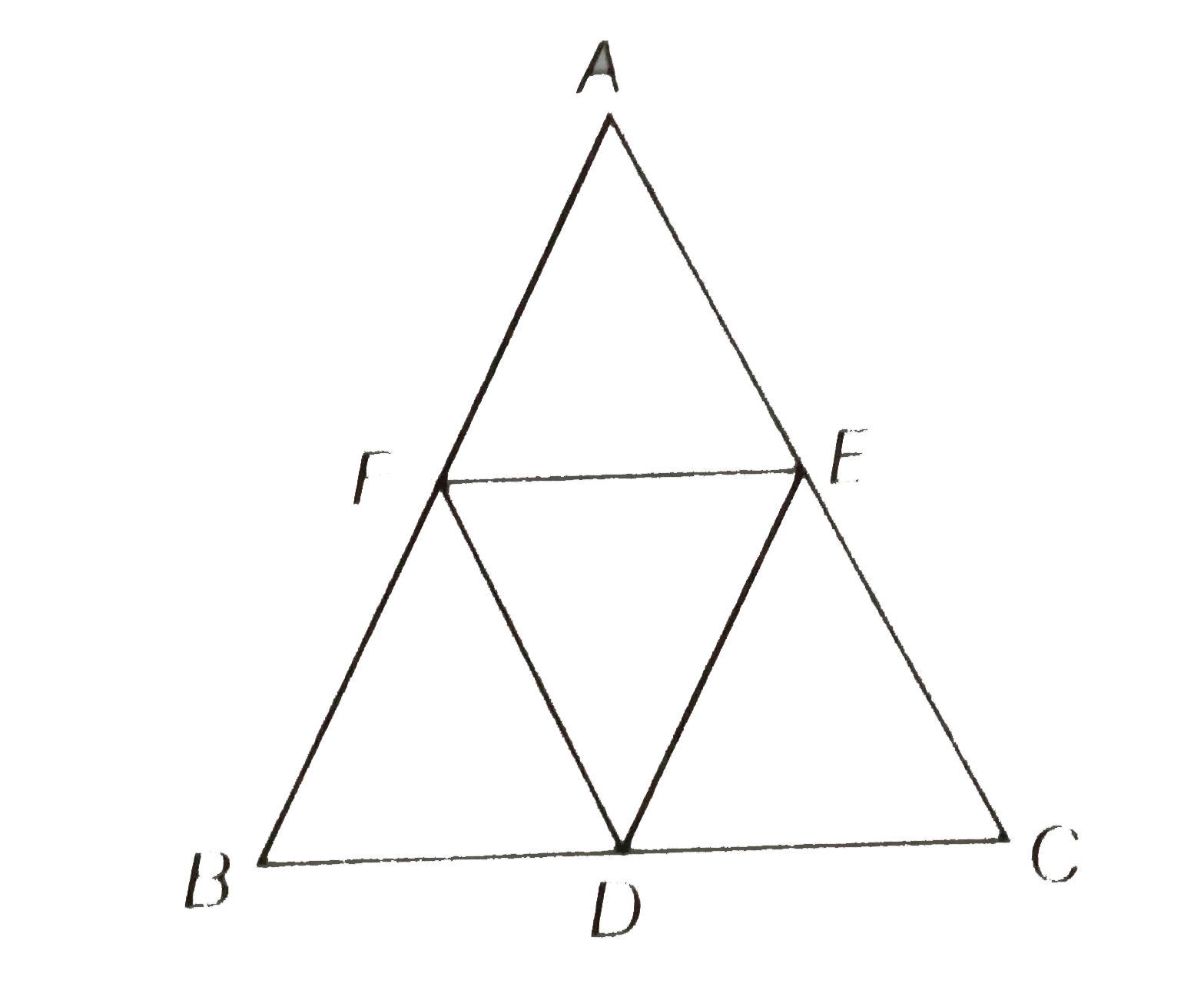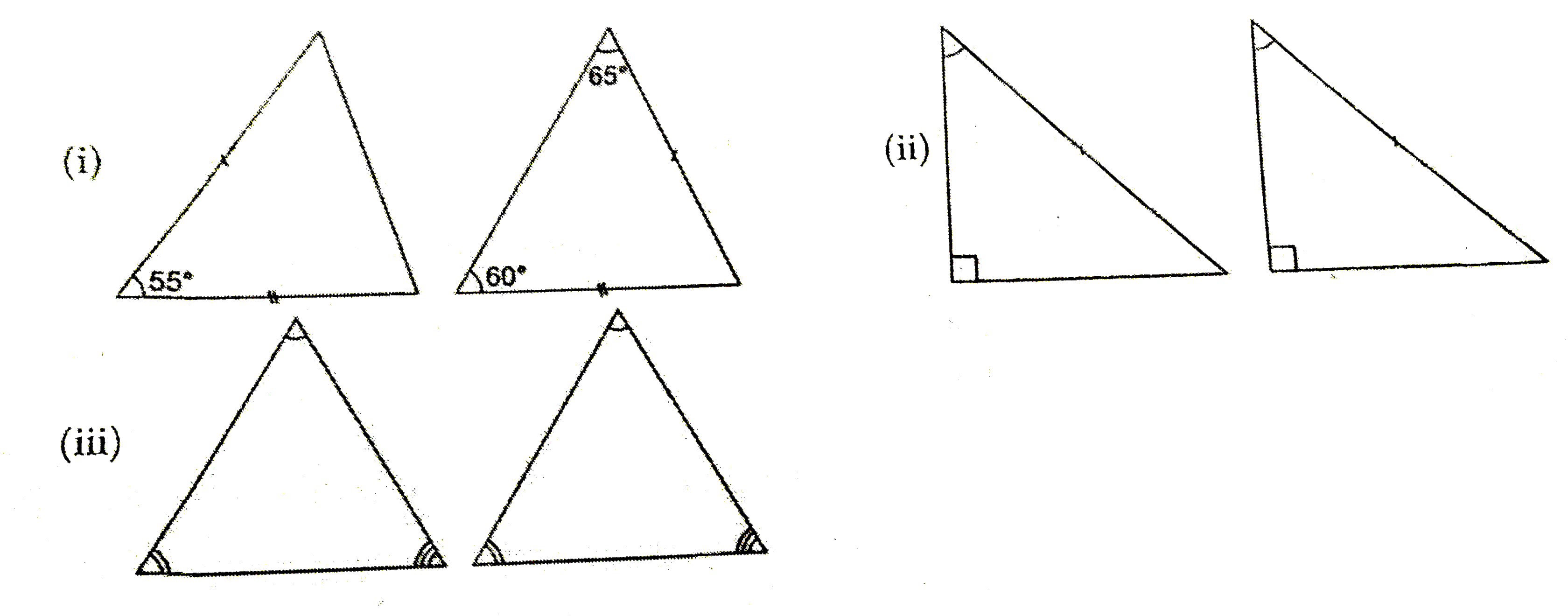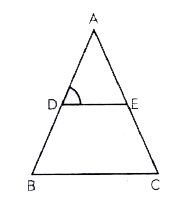It is given that ΔDEF~ΔRPQ. Is it true to say that ∠D=∠R and ∠F=∠P? Why?
The correct Answer is:No
Step by step video, text & image solution for It is given that DeltaDEF~DeltaRPQ. Is it true to say that angleD = angleR and angleF= angleP? Why? by Maths experts to help you in doubts & scoring excellent marks in Class 10 exams.
Updated on:21/07/2023Topper's Solved these Questions
- TRIANGLESBOOK - EDUCART PUBLICATIONCHAPTER - TRIANGLESEXERCISE - SHORT ANSWER (SA-I) TYPE QUESTIONS
30 Videos
- TRIANGLESBOOK - EDUCART PUBLICATIONCHAPTER - TRIANGLESEXERCISE - SHORT ANSWER (SA-II) TYPE QUESTIONS
21 Videos
- TRIANGLESBOOK - EDUCART PUBLICATIONCHAPTER - TRIANGLESEXERCISE - OBJECTIVE TYPE QUSTIONS (FILL IN THE BLANKS)
11 Videos
- SURFACE AREAS AND VOLUMESBOOK - EDUCART PUBLICATIONCHAPTER - SURFACE AREAS AND VOLUMESEXERCISE - LONG ANSWER TYPE QUESTIONS
30 Videos
Similar Questions
Knowledge Check
In ΔDEFandΔPQR, it is given that ∠D=∠Qand∠R=∠E, then which of the following is not true?
AEFPR=DFPQBDEPQ=EFRPCDEQR=DFPQDEFRP=DEQRIt is given that ΔABC≅ΔFDE and AB= 5 cm , ∠B=40∘ and ∠A=80∘ then which of the following is true ?
ADF=5cm,∠F=60∘BDF=5cm,∠E=60∘CDE=5cm,∠E=60∘DDE=5cm,∠D=60∘If ΔPQR~ΔDEF,∠P=65∘and∠F=32∘, then ∠Q is
A32∘B65∘C83∘D97∘
In the figure, it is given that BDEF and FDCE are parallelogram. Can you say that BD = CD ? Why or why not?

View SolutionWhich of the following pairs of triangles are congruent ? Also state the condition of congruency in each case :

(iv) In ΔABC and ΔDEF,AB=EF,BC=DF and ∠B=∠F
(v) In ΔABC and ΔPQR,AB=QR,AC=PR and ∠B=∠R
(vi) In ΔABC and ΔPQR,∠A=∠P,AC=PR and AB=PQ
(vi) In ΔABC and ΔPQR,AB=QR,∠A=∠Q and AC=QP.
View SolutionIn the given figure, if ∠D=∠C, then it is true that △ADE~△ACB? Why?

View SolutionIn ΔABCandΔDEF, it is given that ∠B=∠Eand∠C=∠F, In order that ΔABC≅ΔDEF, we must have
View SolutionConstruct the incircle of a given triangle ABC. The following sentences are the steps involved in the above construction. Arrange them in sequencial order from first to left.
(A) Draw perpendicular ¯¯¯¯¯¯IM from I onto ¯¯¯¯¯¯BC.
(B) Taking I as centre and IM as the radius , draw a circle.
(C) Draw a DABC with the given measurements.
(D) Draw bisects of two to the angles. say ∠Band∠C to intersect at I.
(D) Draw bisects of two of the angles, say ∠Band∠C to intersect at I.
View Solution
